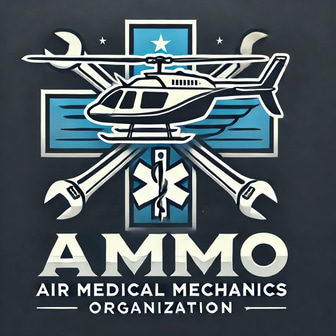Disclaimer: The information provided is for general informational and educational purposes only. Nothing contained herein shall be construed as guidance for, or a basis of, compliance of any regulatory or certification standards. This information must not be used as the sole basis for the certification, inspection, repair, modification, or return to service of any aircraft, product, or component. Users are responsible for consulting appropriate, approved technical data, regulatory authorities, before performing any maintenance, modification, or return-to-service actions.
FAA Regulations & Guidance
FAA Order 8900.1, Vol. 3, Ch. 57, Sec. 1
This order provides guidance on the requirements for oxygen systems in air carrier operations. It outlines the conditions under which supplemental oxygen is required for crew and passengers, including altitude limitations and oxygen supply minimums. The regulation ensures compliance with safety standards to prevent hypoxia and other oxygen-related issues during flight.
FAA InFO 13005
This FAA Information for Operators (InFO) document highlights safety concerns regarding oxygen use in aviation. It provides best practices for handling, storing, and utilizing oxygen systems on aircraft, particularly in emergency and medical transport settings. Operators are encouraged to follow these guidelines to enhance safety and regulatory compliance.
FAA AC 135-5B (Cancelled)
This now-cancelled Advisory Circular previously addressed oxygen system requirements for Part 135 operators, such as air ambulances and charter flights. It provided guidance on installation, maintenance, and operational procedures for onboard oxygen systems. While cancelled, much of its information is still relevant for understanding historical compliance expectations.
Occupational Safety and Health Administration (OSHA) Oxygen Standards
29 CFR 1910.104(b)(8)(ii)
This OSHA regulation covers the storage and handling of liquid oxygen, specifically focusing on cryogenic containers. It mandates safety requirements, including ventilation, fire protection, and pressure control measures. The rule is designed to mitigate risks associated with the use of liquid oxygen in industrial and medical applications.
29 CFR 1910.253
This regulation outlines the proper handling, storage, and use of oxygen cylinders in workplace environments. It includes requirements for cylinder construction, transportation, and fire safety precautions to prevent combustion hazards. Employers must comply with these standards to ensure worker safety when dealing with compressed oxygen.
Department of Transportation (DOT) & Hazardous Materials Regulations (HMR)
Hazardous Materials Transport Regulations
49 CFR 173.301
This regulation establishes general requirements for transporting compressed gases in cylinders. It includes specifications for cylinder integrity, testing, labeling, and handling to prevent leaks or explosions during transit. Compliance with these guidelines is crucial for aviation and medical transport industries dealing with oxygen cylinders.
49 CFR 173.302
This rule specifies the conditions under which compressed gases, including oxygen, can be transported in cylinders. It addresses pressure limits, safety relief devices, and compliance with applicable industry standards. These regulations help ensure safe transport and minimize risks during shipping and handling.
Packaging & Cylinder Requalification
49 CFR Part 178 Subpart C
This section of the regulations defines specifications for the design, construction, and testing of cylinders used to transport hazardous gases like oxygen. It includes requirements for material strength, pressure ratings, and quality control procedures. Compliance is necessary to ensure cylinders are durable and meet safety standards.
49 CFR 180.209
This regulation governs the requalification, testing, and maintenance of compressed gas cylinders. It specifies the frequency and methods of inspection, including hydrostatic testing, to ensure cylinders remain safe for use. Adherence to this rule is critical for continued certification and legal transportation of oxygen containers.
Air Transport of Oxygen Cylinders
49 CFR 175.8(b)(1)
This regulation provides exceptions for transporting certain compressed gases, including oxygen, on aircraft. It details conditions under which these gases may be carried safely without full compliance with standard hazardous materials rules. The provision is essential for medical and emergency air transport operations.
49 CFR 175.34
This rule outlines requirements for carrying oxygen for medical use aboard aircraft. It specifies handling procedures, safety checks, and operational restrictions to ensure the safe use of onboard oxygen systems. Airlines and air medical operators must follow these regulations to comply with federal safety standards.
49 CFR 175.501
This regulation provides additional requirements for transporting oxygen and other oxidizing gases on passenger and cargo aircraft. It addresses quantity limitations, packaging, and specific labeling requirements to prevent combustion hazards. Compliance with this rule is crucial for airlines and freight carriers handling oxygen shipments.
© 2024. All rights reserved.
Disclaimer: The information provided by the Air Medical Mechanics Organization (AMMO) is for general informational and educational purposes only. It has not been reviewed, approved, or accepted by the Federal Aviation Administration (FAA), any Organization Designation Authorization (ODA) holder, Type Certificate (TC) holder, Supplemental Type Certificate (STC) holder, or any aircraft or component manufacturer.
Nothing contained herein shall be construed as guidance for, or a basis of, compliance with FAA regulations, manufacturer-approved data, type certificate or supplemental type certificate requirements, or any other regulatory or certification standards. This information must not be used as the sole basis for the certification, inspection, repair, modification, or return to service of any aircraft, product, or component.
Users are responsible for consulting appropriate, approved technical data, regulatory authorities, and manufacturer guidelines before performing any maintenance, modification, or return-to-service actions. AMMO assumes no liability for the use or misuse of any information provided
